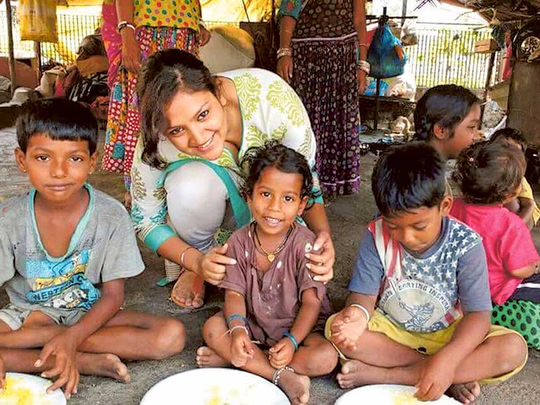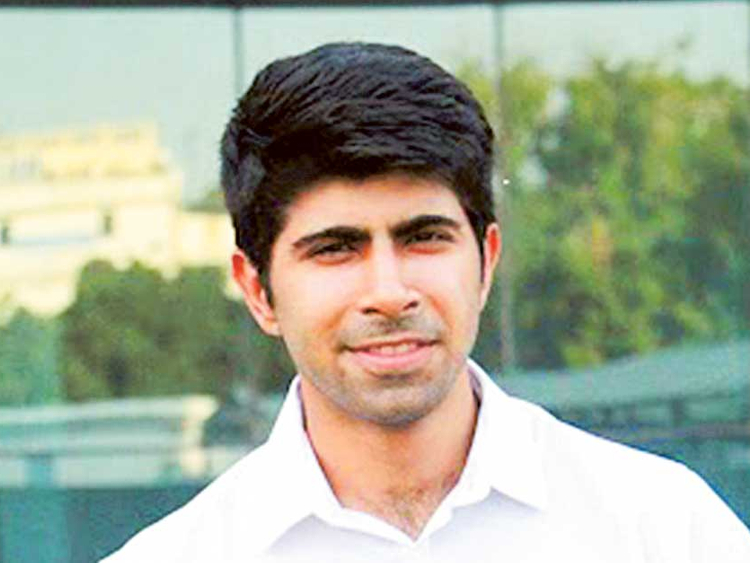
Big, fat Indian weddings are all about glamour, glitz and excess. And yet, it was this excess at one such wedding that gave Ankit Kawatra a simple but brilliant idea, an idea that could bring succour to the poor who often have to go without two square meals a day.
Around two years ago, Kawatra was attending a wedding when he noticed something that completely appalled him. “There were nearly 35 types of cuisines that night, and a lot of it would have just gone to waste. That food could have easily fed 4,000 to 5,000 people, if not more,” recalls the 26-year old. Upon inquiry over the next few days, Kawatra realised that the usual practice at weddings was to just throw away leftovers.
This pushed Kawatra to launch Feeding India, a not-for-profit social organisation that tries to address two big problems of the country — hunger and food wastage.
Feeding India deals with leftover food at big-ticket events. Once the food is cleared as fit for consumption, its volunteers pack it in easy-to-use boxes and distribute it to NGOs, night shelters and other organisations that might require food. Thus, it curbs food wastage while ensuring food is distributed to people who really need it. Feeding India has a helpline number and a newly launched app, which is how donors get in touch with the organisation.
India has a staggering 194.6 million undernourished people, according to The State of Food Insecurity in the World 2015 report by the Food and Agricultural Organisation, the second highest number of undernourished people in the world.
On the other hand, a lot of food is wasted at weddings, events, hotels and corporate offices, which can be easily channelled to feed the hungry, poor and underprivileged. Nearly 40 per cent of food goes waste in India and food worth Rs580 billion (Dh32 billion) is wasted every year. Most of this food is dumped in landfills, where it produces methane and ultimately leads to the depletion of the ozone layer. Feeding India believes that this wasted food is enough to feed one-third of the poor.
In the last two years, Feeding India has managed to get the participation of nearly 10,000 voluntary members in cities across the country. The organisation hopes to expand to around 100 cities by the end of this year. Today, it is present in most of the metropolitan cities as well as tier 1 and tier 2 cities such as Ludhiana, Jaipur, Patna, Indore, Hyderabad and Pune. Feeding India hopes to provide 100 million meals by 2020.
The organisation has partnered with more than 15 caterers and nearly 700 restaurants across the country. The caterers give Feeding India a call about the approximate quantity of leftovers that are likely. A team of volunteers in the neighbourhood is asked to collect the leftover food. This is then distributed to the nearest NGO with which Feeding India has a tie-up. Usually, the food is collected around 12.30pm to be distributed as lunch.
The beginnings
Feeding India’s journey to its present stage was anything but easy. Kawatra, who comes from a business family and was earlier employed with a business advisory firm, left his corporate job to start this venture in July 2014.
“It was not an easy decision and in fact, I didn’t inform my family initially. While on a trip to Dubai, when I went skydiving, I had an epiphany and I decided to leave my job to start Feeding India. I come from a business family and they couldn’t understand why I decided to leave my career to start this. They disowned me for some time, but it is fine now. However, my grandfather asks me even today why I do this [for a living].”
The success of this model was dependent on setting up an efficient organisational structure to ensure smooth functioning, especially because of the perishable nature of the food. Contrary to Kawatra’s expectations, it was tough to convince caterers, hotels and wedding planners to donate food, which they were anyway going to throw away.
“The moment they realised that this food was of some value, they started asking for money. Some caterers were also apprehensive that they might be liable if people fell sick after eating the food. It was initially tough to convince caterers to donate the excess food,” says Srishti Jain, who handles marketing for Feeding India and is one of the founding members of the organisation. She is also one of the employees from Kawatra’s previous organisation, who left the job to be involved in this social venture.
‘Hunger Heroes’
The cornerstone of the Feeding India initiative is the involvement of the volunteers. Called “Hunger Heroes”, the volunteers play an important role in food collection and dissemination. The organisation boasts more than 1,500 volunteers in more than 20 cities. Volunteers come from all walks of life — students to housewives to working professionals, and they have one thing in common — to make an effort to do good for the society.
“I joined Feeding India about two months ago. I would say it has been an enriching experience and I look forward to be more fruitfully involved in this,” says Umang Sodhi, a 15-year-old student who recently joined Feeding India as a volunteer.
Volunteers are key to ensuring implementation in an efficient and sustainable manner. They are expected to travel on their own to facilitate the collection and delivery of the food.
“We feel these people have done something for our society which is no less than what Batman did for Gotham city or Superman for Metropolis. It is easy to continue life as it is, but only a true hero takes out the time to help the ones in need,” reads the Feeding India brochure.
A volunteer usually works for six months but one can also get involved as a “Super Hero”, which demands more time and commitment towards the cause. Volunteers are also involved in the skill development and mentorship programme for underprivileged children in some of the NGOs.
The food is picked up in Magic Trucks. They run every day, all the year round, and serve nearly 2,000 meals daily to the needy. The organisation has recently started a campaign to generate funds to increase the number of trucks. Feeding India has also recently launched an app to reach more organisations and people, who can get in touch directly to donate food. Feeding India hopes to curb hunger in New Delhi by 2020 and in India by 2025.
“We discourage random distribution of food on the roads and elsewhere because we believe that it encourages begging,” says Kawatra.
To ensure that the food is fit for consumption, Feeding India checks the food before actually distributing it.
The organisation claims to be different from other initiatives of its kind, which hope to resolve the hunger and malnourishment problem. Nearly 50 per cent of India’s children are chronically malnourished. The organisation believes in providing complete meal to the children and others. So, in a way Feeding India is addressing the problem of undernourishment as well.
“Feeding India is a social revolution. A revolution that has finally arrived. A movement that has come about to solve nothing out of the blue, nothing completely unheard of, but something we all see and have now come to accept, every day. Join the force; be a part of this wave, for this will take this country by a storm,” reads the organisation’s brochure.
Feeding India is dependent on donations to take care of its operational expenditure. Currently, it is trying to generate funds to acquire more Magic Trucks to enhance the efficiency of food pick-up and delivery. One Magic Truck costs nearly Rs1 million.
Such has been the positive impact of Feeding India’s initiative that attendance in a girls school in Gurgaon went up after they started distributing food to them regularly, says Kawatra. Feeding India would also like to implement the model in rural India.
“We are committed to ensuring that leftover food [that is fit for human consumption] is not wasted,” he says.
Gagandeep Kaur is an independent journalist and writes on gender, development and technology. She tweets as @gagandeepjourno













